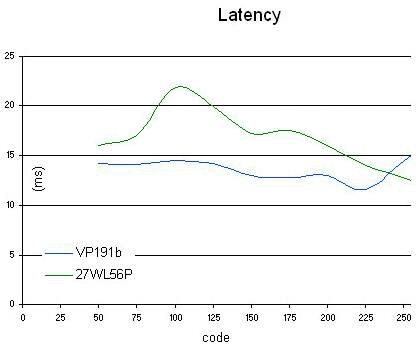LCD TV Set Fall Preview
Close To Perfect
Latency has been reduced with liberal use of the Overdrive technology. The results are more than satisfactory, with a peak at barely 23 ms. And in addition, the Overdrive is perfectly controlled on this set. We're far from the excesses we've seen on some computer monitors. Here's a little tip for happy owners of a 27WL56P: Latency was lowest at a contrast of 72%. The brightness has no influence, but a contrast setting of above 72% slows down the panel's response.
Video Quality
This TV set performed very well for video playback. There was very little video noise on color masses. Flesh tones were accurate. The black level was very low. It can even be adjusted by the user in the OSD, which had the effect of increasing the picture's contrast but reducing dynamics a little in the darkest shades. Note also that Toshiba has missed a few things. For example, when you're in 4:3 mode, the parts of the screen that aren't used are gray instead of black. That's pointless and fatiguing for the eyes.
Interpolation
This is the set's weak point. Interpolation was acceptable with DVDs, but a little short of the mark for games on a video console.
PC Mode
Using the Toshiba 27WL56P in PC mode revealed nothing special. It worked. The interpolation was a little better. That's about all we have to report.
Get Tom's Hardware's best news and in-depth reviews, straight to your inbox.
Sound Quality
Unfortunately, the sound quality didn't match the image quality. It was acceptable, but no more.
Conclusion
Toshiba's 27WL56P is an excellent TV set, fully equipped and ready for HD (720p, at least). Its performance is very good for a set at this price level. If you're ready to sacrifice a little (and we mean very little) performance, it can be a good alternative.
